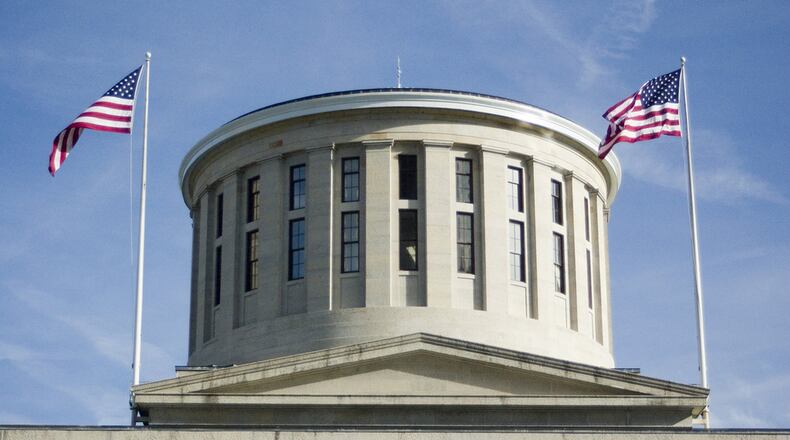First order of business was for Gov. Mike DeWine to swear in House Minority Leader-elect Allison Russo, D-Columbus. She replaced state Rep. Emilia Sykes, D-Akron, who stepped down as minority leader at the end of December.
Last fall the commission voted 5-2 along party lines to approve a Republican-drawn proposal that critics said guaranteed and strengthened the party’s lock on power. Progressive and voting-rights groups sued; and on Jan. 12 the Ohio Supreme Court ruled 4-3 that the maps approved Sept. 15 don’t meet proportionality requirements and are drawn primarily to favor one party — Republicans, who hold a supermajority in both houses of the General Assembly and statewide elected offices.
DeWine said the court ruling means commissioners must try to draw maps that don’t favor one party, do match the proportional partisan breakdown of how Ohioans have voted in recent years, and create compact districts. But those standards are subordinate to requirements in other sections of the state constitution, he said.
In response, Russo said the court was clear that commissioners are required to draw maps approximating the 54% Republican-46% Democrat breakdown for which Ohioans have recently voted.
“The court was also clear that ‘attempt’ is not a meaningless word,” she said. That standard has to be met if at all possible — and many map proposals from last fall’s redistricting process show it can be done, Russo said.
She called for an “open and transparent process” to draw maps that can win bipartisan support and thus endure for 10 years.
If the commission, which consists of five Republicans and two Democrats, approves maps without minority-party support as it did in September, the process must be redone in four years, even if there are no further court challenges. Maps accepted by both parties will last until the next decennial census.
State Sen. Vernon Sykes, D-Akron, commission co-chair, said Democratic caucus staff is working on new map proposals and that both party caucuses have agreed to use statewide election data from 2016 to 2020 as their baseline.
Commissioners agreed that they need to work fast. Secretary of State Frank LaRose said that’s not just to meet the court-imposed deadline, but because new maps must be in place for a long checklist of administrative deadlines prior to the May 3 partisan primaries.
It has already become practically impossible for the 88 county boards of elections to meet some of those deadlines, he said. LaRose said he is asking the General Assembly for authority to temporarily adjust some deadlines, the same authority he received for Congressional election deadlines under Senate Bill 258.
House Speaker Bob Cupp, R-Lima, commission co-chair, said he and Sykes will meet to schedule further meetings. Cupp said he understands the court’s deadline to be Saturday, Jan. 22; three further days are allowed for any additional objections.
The Supreme Court retains jurisdiction over the new maps. If any more objections are made, only a week would remain to resolve them before the Feb. 2 filing deadline for state legislative seats.
About the Author

